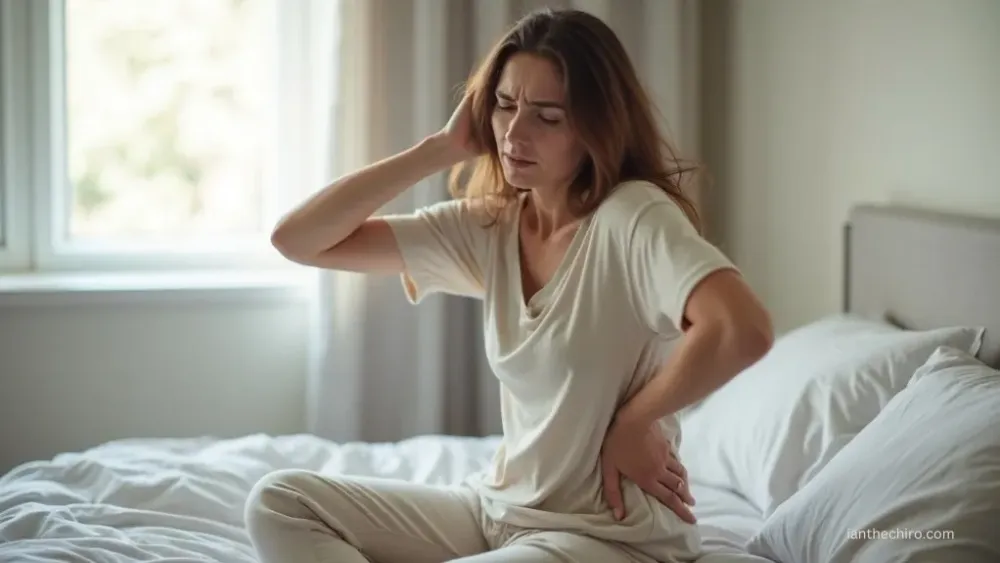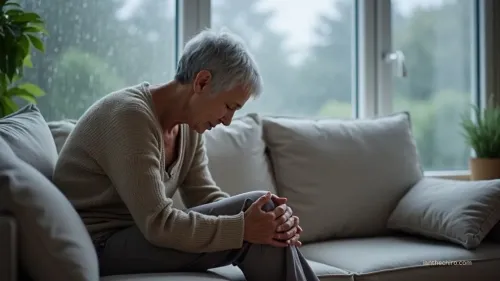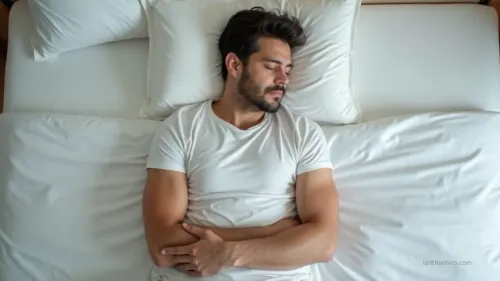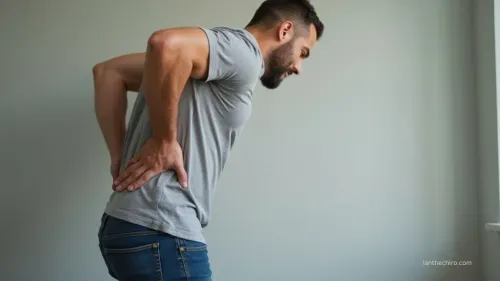The Malaysian Sleep Crisis: Best Positions for Disc Herniation Recovery
If you're struggling with disc herniation and back pain in Malaysia, your sleep position matters more than you might think.
Sleeping on your back with a pillow under your knees helps keep your spine naturally aligned and eases nerve pressure, while side sleeping with a pillow between your knees prevents hip twisting. Avoid sleeping on your stomach, as it strains your spine.
These simple shifts can make nights more comfortable and speed up your recovery, find out even more ways to support restful healing next.
Understanding the Link Between Sleep and Disc Herniation
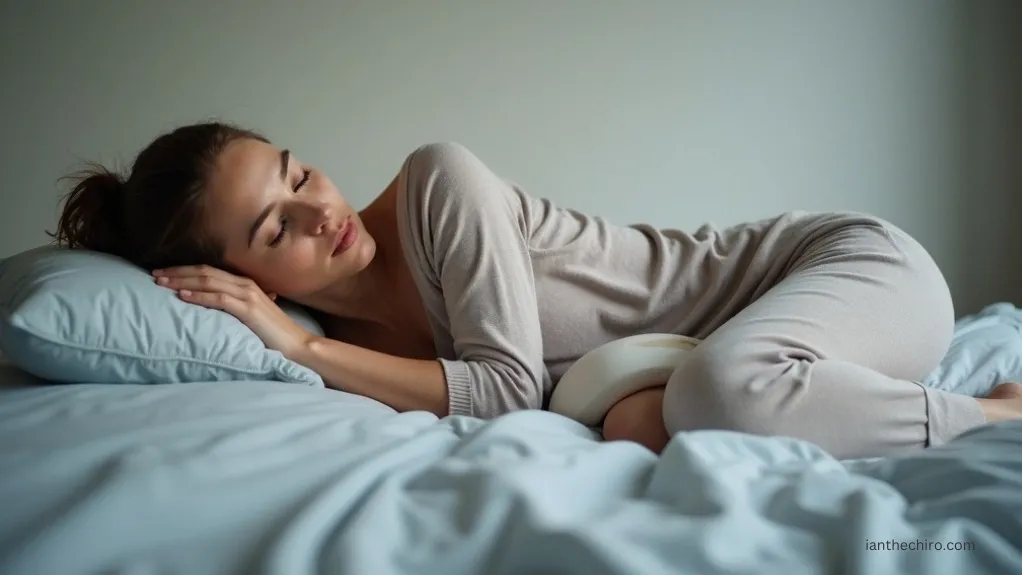
Although it might seem like sleep is just a time to rest, the way you position your body at night plays a critical role in healing from disc herniation.
Your sleep position at night is more important than you think when it comes to recovering from a herniated disc.
When you have a herniated disc, the spine becomes more sensitive to pressure and misalignment. Lying on your back with a pillow under your knees helps keep your spine naturally aligned and reduces stress on the herniated area.
If you prefer sleeping on your side, placing a pillow between your knees stops your hips from twisting, which could worsen disc discomfort.
Avoid sleeping on your stomach, as it strains your spine and may intensify herniation symptoms.
Supportive pillows and a good mattress also maintain proper spinal hydration, helping prevent further injury while you rest.
Common Sleep Challenges Faced by Malaysians With Back Pain
When persistent back pain keeps you tossing and turning at night, you’re not alone, many Malaysians with disc herniation struggle to find a comfortable sleeping position that eases nerve pain and protects their spine.
Lower back pain often makes it hard to settle, and you might wake up several times due to numbness, tingling, or muscle weakness. Finding a sleep position that truly relieves discomfort can feel impossible, especially when poor posture during the night only worsens morning stiffness.
Unfortunately, limited awareness about ideal sleep positions means many continue to suffer, prolonging recovery and reducing sleep quality. It’s important to recognise that small adjustments, such as supporting your lower back can make a big difference.
Addressing these challenges starts with understanding your unique needs at bedtime.
How Sleeping Position Affects Spinal Health and Healing

Because your sleeping position directly influences spinal health, making thoughtful adjustments can markedly ease discomfort and promote healing from disc herniation. When you choose a position that supports spinal alignment, you help reduce pressure on herniated discs and minimise nerve irritation.
For example, lying on your back with a pillow under your knees supports your spine’s natural curve, while sleeping on your side with a pillow between your knees keeps your hips and spine aligned. These options relieve stress on your back overnight, giving your body a better chance to recover.
Avoiding stomach sleeping is also essential, since it twists your spine and adds unnecessary strain. Investing in supportive pillows and a mattress that keeps your spine neutral further enhances your spinal health and healing.
Top Recommended Sleep Positions for Disc Herniation Recovery
Even if you're struggling with pain from a herniated disc, adjusting your sleep position can make a real difference in your recovery. Evidence shows that sleeping positions matter: lying on your back with a pillow under your knees supports your spine’s natural curve and eases nerve compression.
If you prefer sleeping on your side, tuck a pillow between your knees, this keeps your hips and spine aligned, reducing disc pressure. The fetal position, with your knees gently drawn up, can also relieve stress on herniated discs by opening up spinal spaces.
Avoid sleeping on your stomach, as it strains your neck and lower back, worsening symptoms. Use supportive pillows to fill any gaps, helping you maintain a neutral, healing alignment throughout the night.
Tips for Creating a Sleep-Friendly Environment for Spinal Support
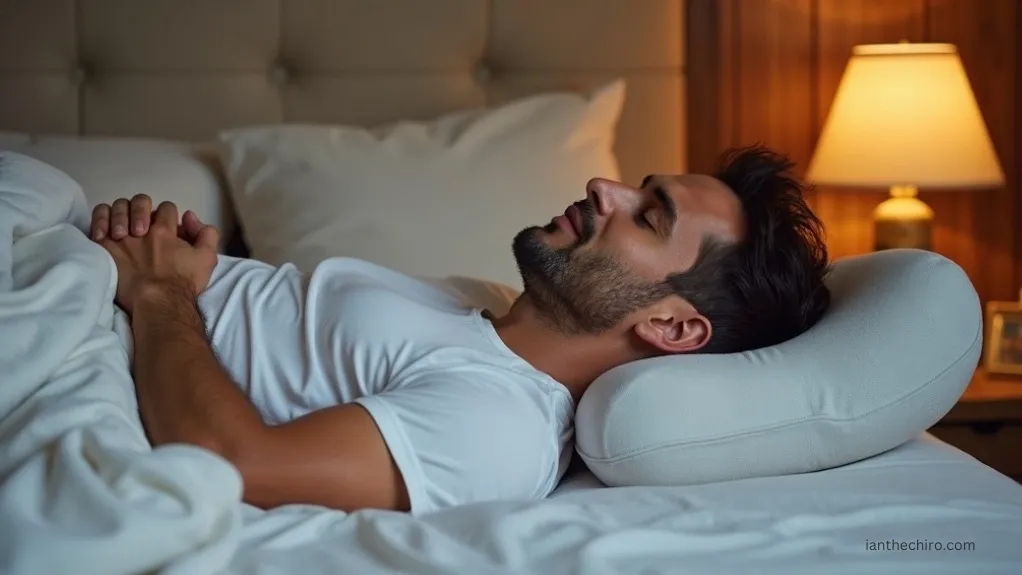
Finding the right sleep position is only part of the solution, your overall sleep environment also shapes how well your spine recovers.
Start with a medium-firm mattress made of latex or memory foam, which offers consistent spinal support and reduces pressure points.
A medium-firm latex or memory foam mattress supports your spine evenly and helps minimise painful pressure points.
Incorporate supportive pillows: use a cervical pillow for your neck and place another between or under your knees to maintain spinal curvature.
Make sure your mattress fits your body so there are minimal gaps, preventing misalignment and extra strain.
Keep your room cool, dark, and quiet to encourage deep, restorative sleep, which is essential for spinal healing.
Don’t forget to replace worn-out bedding and adjust pillow height as your needs change.
Small adjustments can greatly improve your recovery and comfort.
Frequently Asked Questions About Sleeping With a Herniated Disc
What Is the Best Sleeping Position for Herniated Disc Lower Back?
Sleep on your back with a pillow under your knees or on your side with a pillow between your knees. These positions help align the spine and reduce pressure on the affected disc.
How to Speed up Herniated Disc Recovery?
Stick to consistent rest, follow a structured rehab plan (including physical therapy if prescribed), maintain good sleep posture, and stay lightly active with safe stretches. Always check in with your healthcare provider for progress and adjustments.
What Is the Best Sleeping Position for Back Recovery?
Use a supportive back-sleeping position with a pillow under your knees, or sleep on your side with a pillow between your knees. Avoid stomach sleeping, as it puts unnecessary stress on the spine.
What Is the Best Position to Sleep in to Decompress Your Spine?
Sleeping on your back with a pillow under your knees encourages spinal decompression by maintaining a neutral curve. If sleeping on your side, use a pillow between your knees to prevent hip and lower back strain.
Final Thoughts on Sleep Positions for Disc Recovery
You don’t have to let disc herniation and restless nights control your life.
By choosing the right sleeping position and making your bedroom more supportive, you’re giving your spine a real chance to heal. Isn’t it time you woke up feeling less pain and more refreshed?
With a few simple changes, you can ease your discomfort and reclaim restful sleep. Remember, better nights lead to better days and you deserve both as you recover.





